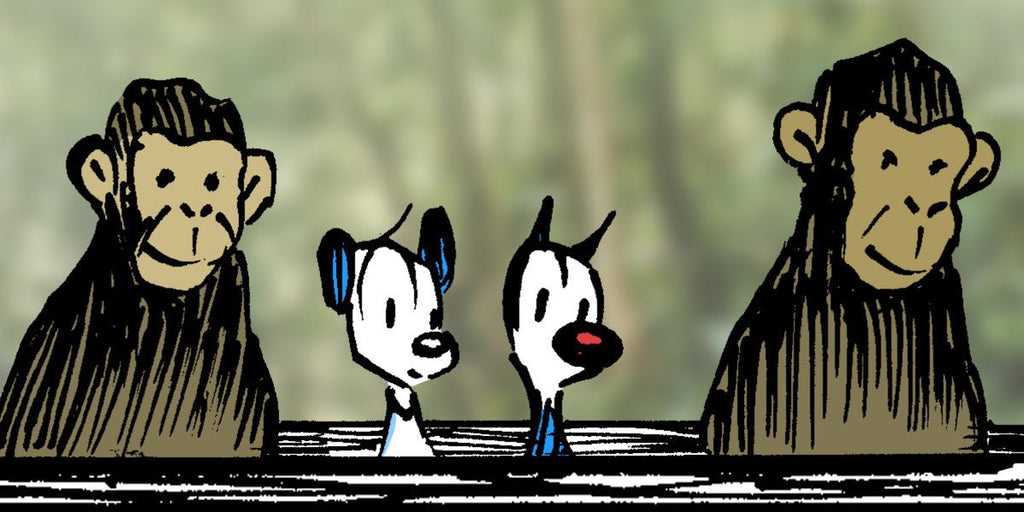In honor of World Chimpanzee Day (celebrated annually in July), we’re joining forces with the Jane Goodall Institute to spread awareness about chimpanzees and the threats they face in the wild — and in captivity. To get started, here are a few interesting facts you might not know about these amazing creatures. To learn even more, and to find out how you can help, visit WorldChimpanzeeDay.org.
1. Chimpanzees are humans’ closest living relatives.
Humans and chimps evolved from a recent common ancestor, branching off to become modern chimpanzees and modern humans, respectively, around 6-7 million years ago.
Although our species diverged such a long time ago, we still have a LOT in common. First of all, we share around 99 percent of the same DNA. We also have similar bones, the same number of fingers and toes, and the ability to feel and express a range of emotions. Plus, our brains are very structurally similar. (Humans’ are larger in size, however, and have developed several areas chimpanzees lack).
2. Chimpanzees make and use tools.
Chimpanzees use objects like stems, sticks, leaves, and rocks as tools. Chimpanzees also create simple tools, like removing leaves from sticks, for certain purposes, and can learn from and teach one another how to make and use tools! Dr. Jane Goodall first observed this behavior in 1960, when she saw a chimp (whom she named David Greybeard) use a blade of grass to “fish” for termites. This was an important discovery because previously, scientists thought humans were the only creatures who utilized tools. Research in Gombe, Tanzania, on these same families of chimpanzees continues to this day in the longest-running wild primate study in the world.
3. They have complex methods of communication.
Chimpanzees don’t just communicate through gestures and postures; they also kiss, laugh, exhibit various facial expressions, and call out to each other with loud sounds known as pant-hoots. Plus, each individual chimp has his or her own pant-hoot — allowing others to identify their “voice,” even from afar! (Watch Jane pant-hoot in this video about why we should celebrate World Chimpanzee Day.)
4. They’re endangered.
At the beginning of the 20th century, there were around one million chimps in the wild. Today, scientists estimate that only around 340,000 remain. Of the 25 countries in Africa where chimpanzees once lived, they’ve already gone extinct in four. The main threats to chimpanzee populations are habitat loss, the illegal pet and bushmeat trade, and disease. JGI is working in collaboration with local communities in Uganda, the DRC, Tanzania, and the Republic of Congo to reduce these threats and protect chimpanzees and their habitats — while improving the well-being of people.
5. Many are living in captivity.
Chimpanzees are still unfortunately taken for the illegal pet trade and the entertainment industry, and for unaccredited roadside zoos or other attractions around the world. In many countries, they are also still living in terrible conditions in biomedical research facilities. It has been the effort of Dr. Goodall, JGI, and other groups to successfully retire chimpanzees in the US from research, though many are still awaiting transfer to sanctuary.
To learn more about the Jane Goodall Institute, visit their website. You can also read more about World Chimpanzee Day here.
Many thanks to Ashley Sullivan (Community Engagement Specialist at the Jane Goodall Institute) for contributing to this article.


Comments (2)